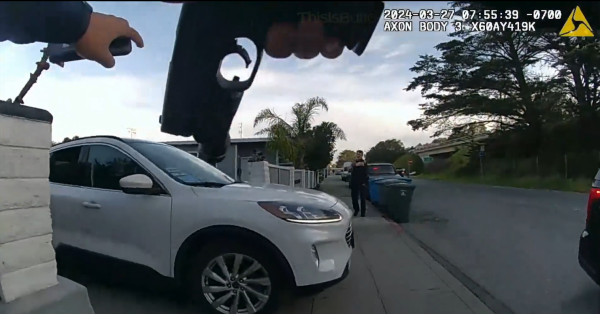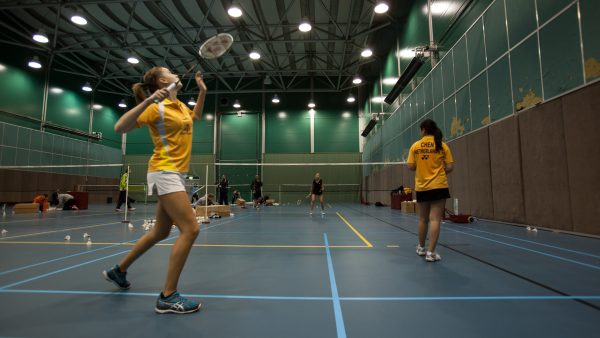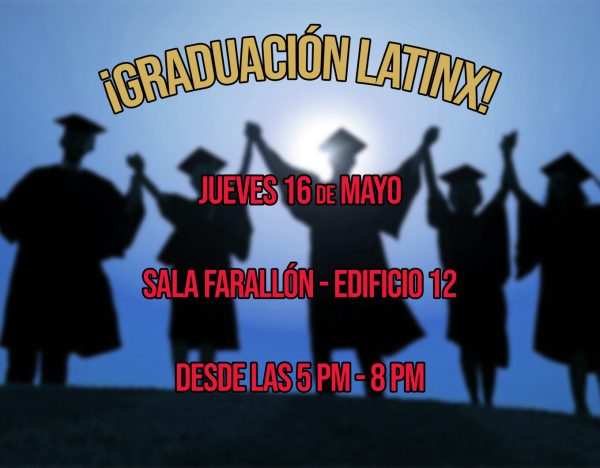SMCCCD’s working moms conquer the classroom
Pursuing higher education is a challenging feat for many students. Add to that the responsibility of six young children and the confines of a physically and emotionally abusive relationship, and the challenge seems insurmountable.
Despite these grueling obstacles, Norma Encisco, who goes by Araceli, is thriving at CSM. She’s pursuing a degree in both administration of justice and ethnic studies while working for CSM’s student ambassador program and being an active member of the Phi Theta Kappa International Honor Society. On top of these substantial accomplishments, she’s maintained a 3.85 GPA, even earning a spot on the dean’s list thrice.
“The main reason I applied to be a student ambassador was because I have sole custody of my kids, and I only work during school hours,” said Encisco. “I don’t have any family or support system that helps me with my kids, so the student ambassador program was a perfect fit for me to be able to work during school hours.”
But Encisco’s journey to becoming a leader in the SMCCCD community was riddled with hardship that she has since transcended.
“I dropped out of school when I was 14,” Encisco said. “I sadly then went into an abusive relationship, and in 2016, I started the process of trying to figure out how I was going to take myself and the kids out of that situation. In 2019, I applied to the adult school … The director there told me I should give myself two to three years to earn my GED because of my situation … I actually earned my GED five weeks afterward.”
Since enrolling at CSM, Enciso has leveraged the school’s Mary Meta Lazarus Child Development Center, which offers daycare services to students and staff, to assist her in caring for her children. She credits their services for her ability to juggle her dynamic family life with her drive to earn two associate degrees and transfer to a four-year university.
“The child development center has been like my lifeline because they were able to help me get (my son) out of the situation that I was in,” Encisco said. “(Without them), I would have to leave him with my ex-husband … He started off as 39th in line to get into the program. I told them a little more of what was going on at home, and they were able to fast track him and get him in by spring of 2020.”
Tina Watts, the faculty coordinator for the Skyline Child Development Center, has been involved with the program for 11 of its 26 years of operation. Right now, the center is serving children from 2 to 5-years-old, but in the past, they’ve served children as young as six months.
“Access to childcare is a barrier for anyone, whether you’re seeking work, you’re trying to go back to school, you’re just trying to get errands today, and certainly the pandemic has highlighted that,” said Watts. “We are one of many options for students to be able to access the resources that the campus provides, and also manage their other daily life functions.”
For Enciso, the services that the Child Development Center (CDC) provides to her extend beyond childcare. The program has served as a social safety net for her and her family.
“The CDC just helped me mentally prepare myself for ongoing issues,” Encisco said. “They helped me with resources like Starvista and SparkPoint. They just created a general family-like connection with me, which is something that I don’t have at home; I am basically on my own. So they created a family network that was genuinely interested in the well-being of the kids and my well-being.”
But the CDC isn’t the only resource Encisco leaned upon to get ahead.
“The financial aid department has been a blessing because they go out of their way to help me when I reach out and tell them that I have had these out-of-pocket expenses that I had to use on the kids,” Encisco said. “They have found me extra grants throughout my whole time at school, and with their help, I’ve been able to keep almost straight A’s my entire time.”
Outside of school hours, Encisco has developed an efficient yet challenging routine to serve as a source of stability in her kids’ lives, while advancing her education.
“Once (the kids) get home, we all do homework together,” Enscisco said. “We have dinner together, and then I send everybody off to bed by 6:45 because there are 6 of them. It does take some time for them to fall asleep, so they chat in their bedrooms. Once everybody’s asleep, it’s time for me to do homework. Usually, I do homework until about 12 or 1 o’clock in the morning, and then I start my day all over again.”
Enscisco is not alone in her efforts to grapple with both family life and school life. Watts reaffirmed the difficulty of Ensisco’s daily schedule.
“It’s really hard to study with young children at home,” Watts said. “They require attention; they require energy; they require feeding and toileting, and so those can be distracting pieces when you have to focus on synchronous zoom or you’re trying to read so that you can be prepared for your class assignments. And so we provide a safe place for children to be while their families are preparing for their academic studies.”
Alexanne Labrador graduated from San Francisco State over 20 years ago and took BUS 100 at Cañada last semester to enhance her skills in the workforce. A working mom like Encisco, Labrador has similarly faced challenges when balancing 50-60 hours a week of work, family life and school.
“I’ve had to miss school for work,” said Labrador. “I deal with stakeholders and shareholders, I am responsible for board meetings and executive office sites. So it was very hard for me to say I can’t do this because I like to do it all. That’s part of being an executive assistant — being able to manage all of it.”
Despite many challenges, Alexanne’s supportive teacher steered her towards success in the class.
“Professor (Gampi) Shankar has been very good about communicating,” Labrador said. “For example, a couple of times I’ve let him know that I’m unable to, for example, do the group project. He was very supportive in saying, ‘Well, you can make it up in this way, or make sure that you check the announcements and do the extra credit work there.’”
Ensisco’s professors have also been accommodating of her situation, giving her the bandwidth to excel in class. An experience with philosophy professor Jeremy Ball particularly stood out to her for his compassionate response.
“Before my son was able to get into the CDC program, I had a physical altercation with my ex-husband right before class,” Encisco said. “I didn’t tell anybody. I didn’t report it. But I had to bring my son to school because I wasn’t gonna leave him at home with his father. I had shown up to class thinking that the professor wasn’t gonna let me stay, but (professor Ball) actually told me to just bring him into the classroom. So I was able to set him up with a tablet and have him sit there with snacks while I was able to do my presentation.”
While bringing children to class is not ideal for parents and hyperactive children, the CDC is currently resource-constrained, so there might be no alternative for some parents.
“There are state and national guidelines for the adult to child ratio. … if we wanted to expand the full capacity of our classroom space or our licenses or discern the full age range, say from birth to school age, we would need more people and there are price tags that are attached to them,” Watts said.
Ultimately, making childcare more for student parents is a prime objective, as it has the potential to build economic mobility for many families.
“We talk a lot about transportation, we talk a lot about housing, we talk a lot about food insecurity,” Watts said. “We have lots of resources on all of our campuses, particularly at Skyline. I would love to see childcare and parenting status be a part of that conversation of basic needs for students.”














